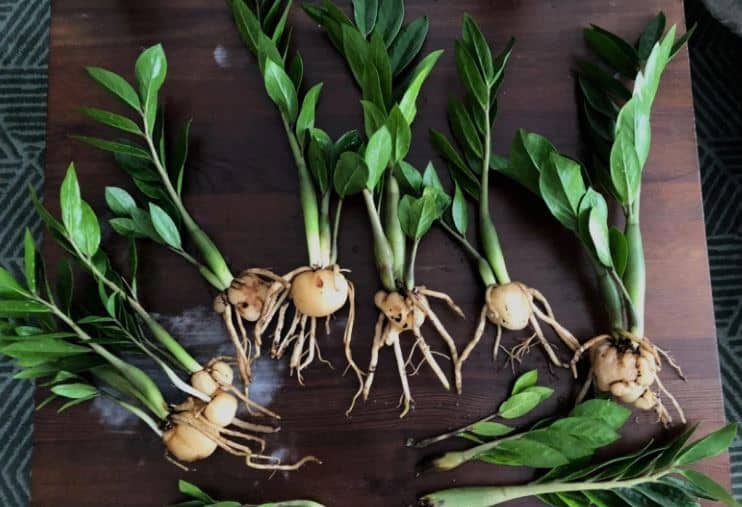Last Updated on September 9, 2023 by a Friendly Gardener
Botanically known as the Zamiifolia Zamioculcas, the ZZ plant is a popular houseplant due to its low maintenance requirements. The ZZ can survive in just about any environment and are especially desirable due to its capability to survive low light locations like offices, lobbies, and apartments without many windows. They will also do well in bright light, so lighting will generally not be an issue, but root rot will, and it can prove to be lethal.
What Is ZZ Plant Root Rot?
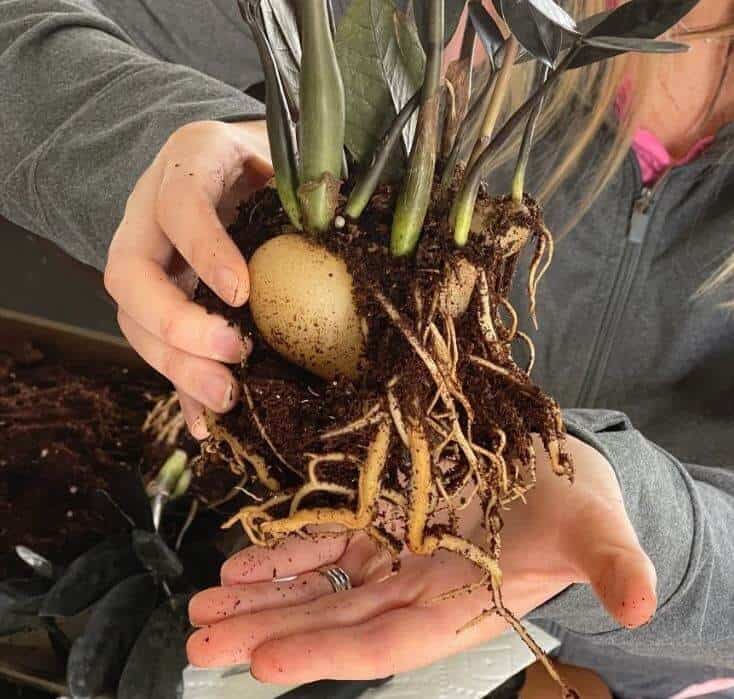
Rotting roots on houseplants are referred to as Root Rot disease. Most occurrences of rot root ZZ plant are because of excessive watering and if you do not intervene quickly to remedy the problem, your ZZ plant will die. Unfortunately, this can be very challenging if the symptoms appear under the soil bed surface. Many of us will not become aware of the situation until it is too late.
Another cause of ZZ plant root rot is fungi found within the soil. These fungi may be sleeping in your plant’s soil. Once you overwater several times, the fungi wake up and get to work attacking the plant’s root system.
Whether it’s overwatering or fungi in the soil, they can be lethal and spell the end of your plant if left unattended.
What Does ZZ Plant Root Rot Look Like?
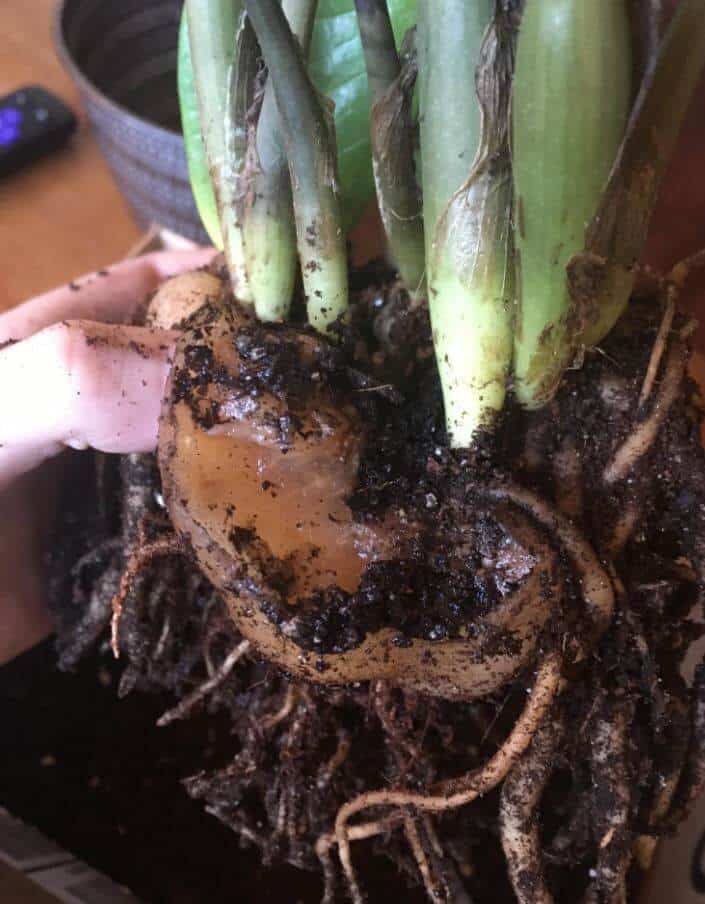
The principal symptom that will appear above ground on your plant is the discoloration of foliage. Your plant will lose its rich deep green hue and begin to fade. Leaves will become pale until they turn yellow. They will then die and drop off.
Your plant may also wilt and turn soft. Do not misinterpret the plant’s spreading out for drooping, but if all the stems begin to droop, investigate beneath the soil surface for indications of root rot.
Mold and algae found at the plant’s base together with a musty odor emanating from the soil indicate root rot.
If any of these symptoms are apparent, it’s time to check underneath the soil bed surface.
ZZ roots should appear crispy and white. Unhealthy ZZ plant roots will look brown, black, or even gray and appear mushy or slimy. A defining symptom of root rot is the odor of the root system. It will be musty and foul-smelling.
When dealing with root rot, rapidity is the key to success.
How Can I Check My ZZ Plant for Root Rot?
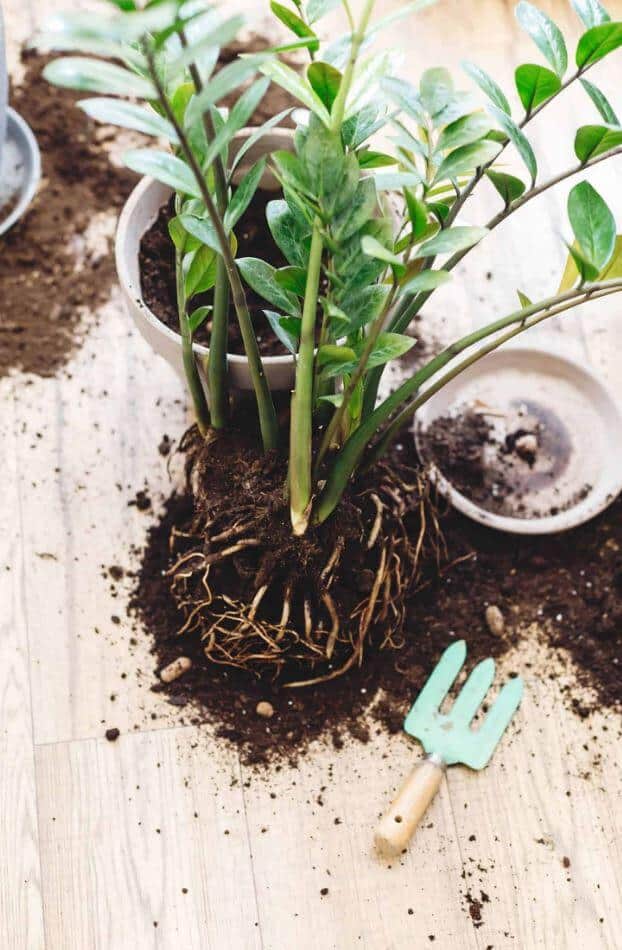
You need to evaluate the root system conditions and investigate the root ball beneath the soil. Wear gloves, as the ZZ plant can irritate the skin.
To do so:
- Remove the ZZ plant from its pot by flipping it and gently sliding out the plant. Attempting to pull the plant out from above will only risk damaging the plant. If your plant is resisting, slide a knife around the pot’s inside to loosen the soil.
- Brush soil away from the roots gently. Rinse the root ball in tepid or warm water to see it clearly. If roots appear discolored and mushy, your plant is suffering from root rot.
- Also, check out the ZZ plant rhizomes. Rhizomes resemble bulbs and are your plant’s reservoir of water and nutrients. Rhizomes should also appear white and crispy. Mushy, brown rhizomes are indicative of root rot.
How Can I Save My ZZ Plant from Root Rot Disease

To attempt to save a ZZ plant affected by root rot, you will need to prune both the plant and the roots. Depending on how far advanced the root rot is, attempts to save and revive it may not be successful.
- Remove the ZZ plant from its pot. Do so gently to prevent damage. Flip the pot while supporting plant stems to remove them from its container.
- Gently remove the soil attached to the root system and then rinse off the remaining soil with warm or room-temperature water. Once you have removed the soil, you will be able to see the roots more clearly.
- Trim off all roots that appear gray, brown, black, and mushy. Use a sterile pair of sharp scissors. Wash tools well before pruning so that the wounds you create will be clean. Avoid sawing or performing jagged cuts or breaks. Remove all unhealthy ZZ plant roots even if this ends up being the majority of the plant’s roots. If a root is compromised it cannot be revived, so do not hesitate to remove affected roots if you want your plant to survive.
- Rhizomes that are brown and mushy should also be removed. Cut cleanly and quickly.
- Select a new pot to avoid fungus still attached to the previous container or sterilize the pot you were using before returning the pruned plant to it. To sterilize your container, use ten parts water with one part bleach. Wash thoroughly and leave it out to dry. Whichever container you choose, it should have drainage holes.
- Toss out the old soil and infected plant and root parts. Do not compost. Use a new soil mix that is half potting soil and half cactus or succulent soil mix. You can add in some perlite if you are worried about adequate drainage. Replantyourplant and water only lightly.
- Remove any dead or damaged leaves and stems.
- Place in a shady spot for a few weeks to facilitate recovery. Do not feed your plant until new growth appears.
If you have had to remove most of the root system and rhizomes, you will need to prune your plant significantly down to approximately one-third of its original size. This will allow the plant to concentrate energy on growing new roots.
A Final Consideration
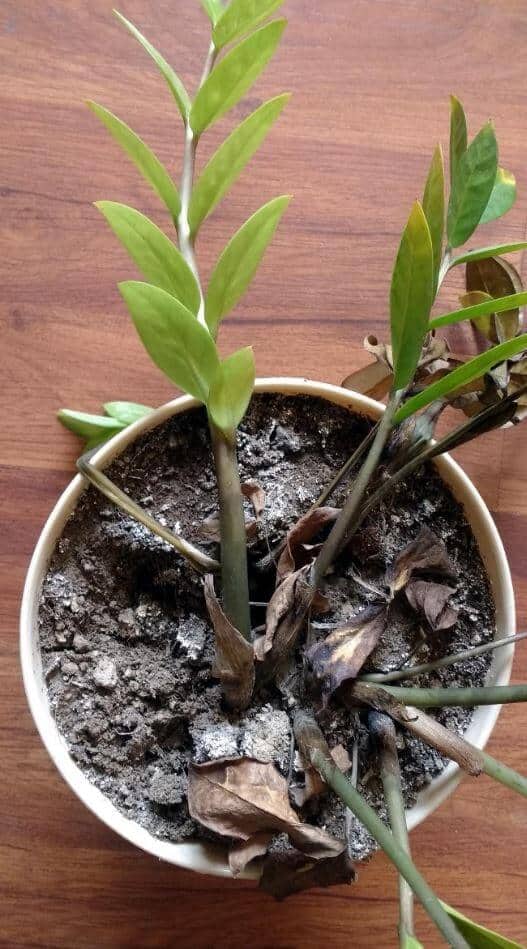
Resist overwatering. Most ZZ plants develop root rot because of excessive watering. This can be due to too much water, poor drainage, or even an incorrect soil blend. Only water your ZZ if at least an inch of the topsoil is dry. Because these plants do store some water, they can manage a bit without it. Better to underwater than overwater.
If your plant does not revive after a bout with root rot, attempt propagation with any healthy stems with healthy leaves. Do not expect immediate results. As slow growers, you may need months before new growth appears. Be patient.

